How to Improve Your Aim in FPS Games
Here's a quick guide of how to improve your aim in first-person shooter games. All of these techniques are what I've done in the past when wanting to improve my own aim. Because I'm primarily a PC gamer, I don't know for sure if these will work for people who play on Xbox or PS4 players, but the basic principles should apply.
The Importance of Aiming Properly
Aiming is one of those core skills you need to learn to do well in first-person shooter games. That's fairly obvious. It is one of the hardest skills to master simply because you need to consistently be good at aiming for all engagements. From games aim heavy games such as CS:GO to more team/objective based games such as Overwatch, your ability to aim is key to success to taking out your enemies and winning games.
Setting Up Your Hardware Settings
Setting up your hardware and in game settings correctly is the first step to having better aim. You'd be surprised with how a small change in these settings can improve your aim in game. There needs to be a balance between being able to move your cross-hair quickly to react to where your enemies are and being slow enough to move your cross-hair to what you want to aim at without over shooting your target. This balance between the two comes down to you personal preference, but I personally find it easier to be more precise with slower movements. I can always move my mouse hand faster and in bigger arcs to make larger turns.
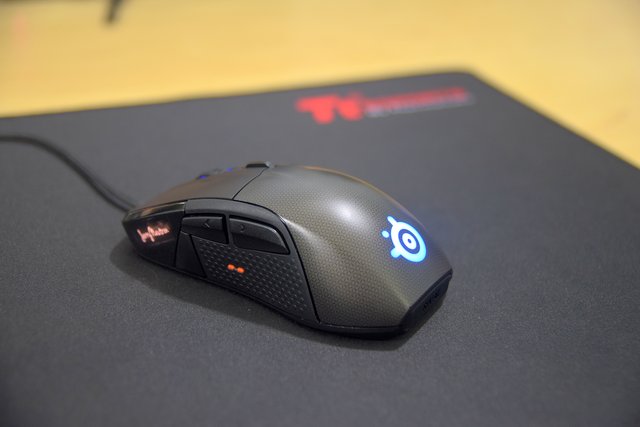
The setting you want to change for your mouse is the CPI (counts per inch) or DPI (dots per linear inch) and if you're mouse allows for it, you should max out your polling rate. I currently have a SteelSeries Rival 700 with a CPI of 800. You want this setting to be low so that you have headroom for bumping up the sensitivity in game. You should also disable any mouse acceleration as this makes aiming corrections inconsistent based on how fast you move your mouse. Mouse acceleration should be disabled in your Windows settings and in your mouse software if its available. Try out a CPI/DPI setting of 800. Depending on what mouse you have this may be a lot slower than you're used to.
In Game Settings
Once your mouse settings have been adjusted, you can now change your in game settings. For this you want to jump into a bot match to see how you need to change these settings. Try and aim for your opponents heads (of course) and if you find yourself consistently overshooting your target, lower your mouse sensitivity and if you find yourself consistently undershooting, increase your mouse sensitivity. Try to spend five to ten minutes between each change to give yourself time to adjust to the new sensitivity and to get a sample size of data to make better decisions when making changes. Once you've set up your mouse sensitivity, you won't really need to do it ever again for that game, so its a good idea to spend some time getting the right settings to begin with. As a general rule for me, when setting up my mouse sensitivity for a new game for example, I'll lower the mouse sensitivity to 10% of what the default setting is (I have no idea why developers always have the default settings so high) and work my way up from there.
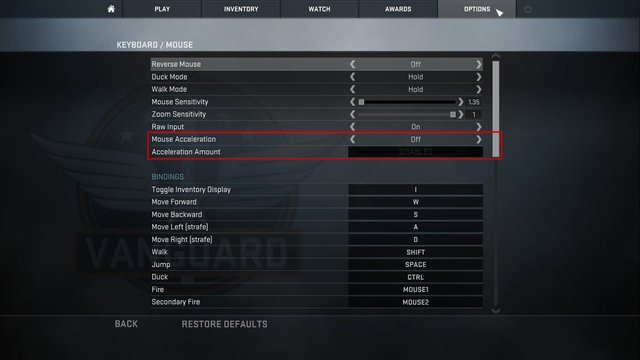
Some games will allow you to change your horizontal and vertical sensitivity independently. To me, much like mouse acceleration, I think it makes aiming inconsistent so I will keep this the same for both axis. However, if you're able to change your sensitivity settings for different characters, such as for games like Overwatch, you generally want to just change the settings for the heroes that you are likely to play. You can do the procedure above for all the heroes, but if you're never going to play them, you're just wasting your time. Then again you may find you'll be more effective now that the settings are different. So its your call on what to do in this situation.
Just for the simplicity, you should keep your hardware setting the same for all your shooter games and changing your in game settings to make adjustments.
Practice
Now comes for the most time consuming part of the process of improving your aim. You're going to need to practice. The way you practice is just as important, if not more important than the amount of time you spend practicing because you don't want to reinforce bad habits in aiming. I like to practice my aim outside of any competitive environment because I need to be focusing on objectives and call-outs as opposed to my aim. The goal for aim practice, and why it takes a long time to master, is that you want to build up muscle memory. This is another reason you should get the right mouse sensitivity settings early. Muscle memory is what makes you be able to aim well consistently.
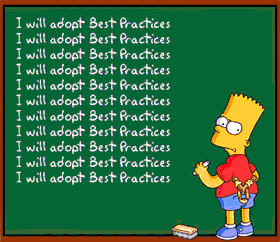
When you first start practicing your aim, you want to start off slow. As Mark Walberg's character in Shooter says, "Slow is smooth, smooth is fast." Take your time with your movements and only click your mouse when your cross-hair is over your enemy's head. As you continue to do this over time, you'll naturally get faster and faster, as you build up your muscle memory. I like to spend 20-30 minutes per day practicing my aim and I usually do this before doing any competitive games as it puts me into the correct mindset and it's a good way to warm up.
In many multiplayer games, there is usually a bot mode that you can use for this practice. The bots tend not to move in a human way, but its a good way to warm up and develop your aim in unpredictable situations. For CS:GO, you can subscribe to a large variety of aim practice maps from the Steam Workshop to practice your aim as well. To practice in Overwatch, I like to set up a as McCree or Soldier against a full team of Annas and set it to head-shots only. In Rainbow 6 Siege you can practice in the Terrorist Hunt mode. Be sure to play at the hardest difficulty to make it a challenge and forces you to reinforce good habits.
Game Specific Practice and Tips
If you've played any organized sports with a coach, you've probably been told to practice the way you compete. This is an important thing to take into account in all aspects of your life, not just sports. It is even more important in mastering aim. When practicing you want to play as though you were in a competitive environment. This is where the bad habits tend to come it if you practice incorrectly.
In more positionally important games with fast time to kill, you want to keep your cursor at head level when clearing or holding corners and you want to make an arc around that corner from as far away as possible. You want to place your cursor where your opponents are likely to be. This allows you to already have your cross-hair at the right height and lowers the amount of correction you need to do. As you're clearing a corner actively stop to check where your opponent is likely to be. I hate it when I'm spectating my teammates and they're looking at the floor or at the wall, or just make big movements around corners without checking common spots.
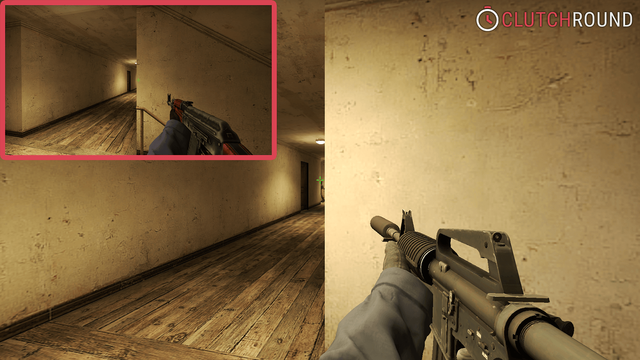
When retreating from a position you still want to be looking at where your opponent might be even if you have to run backwards. Turning away from your opponents should be your last option. Judging where you opponents are likely to be comes down to game sense which builds up over time from playing the game and is something you'll learn as long as you are observant and proactively thinking about this constantly, much like the muscle memory for aiming. When pre-firing an angle, you want to set your mouse angle before you move around the corner so you don't have to make a big adjustment if you see someone.
If the game requires you to stop moving to stay accurate, like in CS:GO, you need to incorporate this into your practice as well. As a general rule you should only ever fire while not moving. As you practice more and more, you can stutter step (stop-start your movement) and shoot as when standing still. When practicing this, you want to start off slow and only speed up once you're able to do it properly at the slower speed as to not reinforce bad habits.
Conclusion
Aiming is a skill you learn over time and takes a long time to master. But practicing in a way that reinforces good habits is more important that practicing a lot. Always remember, Slow is Smooth, Smooth is Fast.
Thanks for Reading
Thanks for reading! If you want to see any more of my future content be sure to hit that Follow Button. I try to write something every day and I usually write about video games, movies and my journey through Steemit.
If you want to see any of my content from the past week, click on a link below:
- Using Markdown to Blog on Steem
- Why I Love Divinity Original Sin 2
- Why I Still Play CS: GO
- My Curie Story: My Thoughts on Game Over, Man
- My Thoughts on Smurfs in Gaming
- Look! A Puppy!
Thanks again and have a lovely day!
All Images are not my own
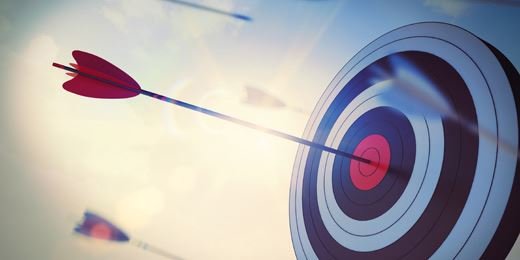
wow, great infromation you shared here ... this good for all game lover...
Thanks buddy. I thoughts so too.
You got a 16.60% upvote from @brupvoter courtesy of @kkbaardsen!
I was summoned by @kkbaardsen. I have done their bidding and now I will vanish...
A portion of the proceeds from your bid was used in support of youarehope and tarc.
Abuse Policy
Rules
How to use Sneaky Ninja
How it works
Victim of grumpycat?